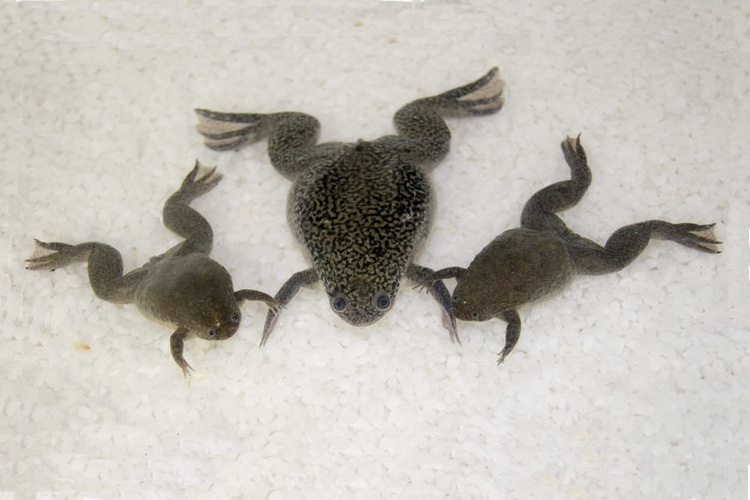With interspecies hybrids, it makes a difference who’s the dad and who’s the mom

With the occasional appearance of coydogs, pizzlies and ligers, it’s clear that different species can often interbreed, even if the offspring are infertile.
But why do some closely related species interbreed and produce viable young – like the mules and hinnies that come from the mating of horses and donkeys – while others don’t? And what does this tell us about the origin of new species?
“New species arise when populations become isolated from each other and evolve to the point that they can no longer interbreed, but also through interbreeding of related species,” said UC Berkeley cell biologist and amphibian enthusiast Rebecca Heald, head of the Division of Cell and Developmental Biology in the Department of Molecular and Cell Biology.
She and her colleagues investigated the viability of crosses between related species using two different species of clawed frog: the common laboratory animal Xenopus laevis, known as the African clawed frog, and the related X. tropicalis, the Western clawed frog. It’s known that when a female of the African species mates with a male Western, the offspring survive, though are sterile. However, when a male of the African species breeds with a female Western clawed frog, the embryos die in the early stages of development.
“This is a really interesting example of crossbreeding frog species in which the outcome depends on which species was the father and which was the mother,” Heald said.

While mammals with different numbers of chromosomes cannot produce fertile offspring – which is the case with offspring of donkeys and horses – amphibians, fish, plants and yeast sometimes can.
Working with colleagues at Radboud University in the Netherlands, Heald and her UC Berkeley colleagues looked at the reasons for different viabilities, and discovered that the maternal molecular machinery of the Western clawed frog cannot fully recognize the paternal chromosomes of the African clawed frog. Two specific pieces of the African father’s chromosomes are incompatible with the maternal cell, which disrupts the separation of the chromosomes during cell division. The resultant cells lack a large number of important genes, such as genes for metabolism, and quickly die.
“These findings are important, because these type of hybrids are present in nature and in some cases lead to new species,” said Gert Jan Veenstra, a professor of molecular developmental biology at Radboud. “When new species are formed, there seems to be a period of transition: Closely related species are able to produce viable offspring, but if the chromosomes are no longer compatible it leads to asymmetric results of crossbreeding. When species further separate, crossbreeding no longer leads to viable offspring.”
“The cellular basis of hybrid incompatibility was previously unknown, and our study revealed the cellular basis of this phenomenon,” Heald said.
The team, which included Romain Gibeaux, Rachael Acker, Maiko Kitaoka and Daniel Nomura of UC Berkeley and colleagues from the University of Texas at Austin and Ulsan National Institute of Science and Technology in South Korea, reported their findings in the Jan. 11 issue of the journal Nature.
